Chiseltooth cichlid - Cichlasoma bocourti
Scientific name: Cichlasoma bocourti
Common name: Chiseltooth cichlid
Family: Cichlidae
Usual size in fish tanks: 18 - 20 cm (7.09 - 7.87 inch)
014
Recommended pH range: 6.8 - 7.4
Recommended water hardness: 8 - 17°N (142.86 - 303.57ppm)
0°C 32°F30°C 86°F
Recommended temperature range: 25 - 28 °C (77 - 82.4°F)
The way how these fish reproduce: Spawning
Where the species comes from: Central America
Temperament to its own species: peaceful
Temperament toward other fish species: aggressive to smaller
Usual place in the tank: Middle levels
Origin
The Chiseltooth Cichlid (Cichlasoma bocourti) is native to the freshwater rivers and lakes of Central America, particularly in Belize and Guatemala. In the wild, they inhabit slow-moving waters with sandy or muddy bottoms, often surrounded by dense vegetation and rocky formations. These natural environments provide them with plenty of hiding spots and areas to forage for food. Understanding their origin is essential for recreating similar conditions in the aquarium, which is key to keeping these cichlids healthy and thriving.
Lifespan
With proper care, the Chiseltooth Cichlid can live for approximately 6 to 8 years. Their lifespan can be maximized by providing a balanced diet, maintaining optimal water conditions, and offering a spacious environment where they can exhibit their natural behaviors. Regular water changes and attentive care are crucial to ensuring these fish live a long and healthy life in captivity.
Tank Setup and Environment
Chiseltooth Cichlids grow quite large, reaching up to 20 cm (7.87 inches) in aquarium settings, so they require a spacious tank. A minimum tank size of 600 liters (around 158 gallons) is recommended for a single specimen or a breeding pair. For community setups, a larger tank is necessary to provide ample space and reduce territorial disputes. As with many large cichlids, they are high waste producers, so a robust filtration system is essential to maintain water quality.
These cichlids prefer a tank setup that mimics their natural habitat, featuring a sandy substrate with plenty of rocks, driftwood, and caves to create hiding spots and territories. Live plants can be used but should be hardy species, as these fish may dig or uproot delicate plants. Ensure that the tank has enough open swimming areas along with the decorations. Maintain water parameters with a pH range of 6.8 to 7.4, a hardness of 8 to 17°N, and a temperature between 25-28°C (77-82.4°F). Regular water changes are vital to keep the water conditions stable and reduce the risk of stress or illness.
Food and Feeding
Chiseltooth Cichlids are omnivorous and not particularly picky eaters, but they do require a varied diet to stay healthy. Offer them a staple diet of high-quality cichlid flakes or pellets, supplemented with a variety of meaty foods such as bloodworms, chopped earthworms, and brine shrimp. These protein-rich foods are essential, especially during the breeding season to support growth and spawning readiness. Additionally, include the occasional meal of spirulina flakes or blanched vegetables to ensure they receive a balanced diet. Feeding them twice a day in small portions is recommended to avoid overfeeding and maintain water quality.
Sexing
Sexing Chiseltooth Cichlids can be determined by observing the differences in fin shapes and body size. Males typically have elongated dorsal and anal fins and are generally more colorful, especially during the breeding season when their hues become more intense. They also tend to be more aggressive and territorial compared to females. Females, on the other hand, are often smaller with a rounder belly, especially when they are ready to spawn. However, sexing juveniles can be challenging, and it is usually easier to identify males and females once they have reached maturity.
Breeding
Breeding Chiseltooth Cichlids in captivity can be quite rewarding. To encourage spawning, provide flat rocks or slate in the tank as potential spawning sites. Both the male and female will clean the chosen site vigorously before spawning. Their coloration changes to a deep yellow, and they may engage in courtship behavior that includes "dancing" around each other. Be mindful of potential aggression during this period. If their interactions become too violent, use a tank divider to give them a break before trying again.
After spawning, the female typically tends to the eggs while the male guards the territory. The eggs usually hatch within 3 days, and the fry are moved to a pit in the substrate by the parents. Once the fry are free-swimming, feed them newly hatched brine shrimp several times a day to support their rapid growth. To increase the chances of obtaining a breeding pair, it's advisable to start with a group of juveniles. Keep in mind that unpaired individuals may need to be rehomed to prevent territorial disputes.
Short Description
The Chiseltooth Cichlid is a large and semi-aggressive fish known for its vibrant coloration and hardy nature. While they can tolerate a range of water conditions, they thrive best with regular water changes and good filtration due to their high waste production. They are best kept in a large aquarium with similar-sized tank mates to prevent aggression. With the right environment and care, Chiseltooth Cichlids can be a stunning and rewarding addition to a well-planned cichlid tank.
Pictures
Bought by aqua-fish.net from jjphoto.dk.



 Thread-finned
Thread-finned 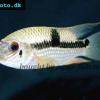 Acara
Acara  Yellow
Yellow  Patrick's
Patrick's  Blue
Blue  Green
Green 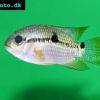 Acara
Acara  White
White  Compressed
Compressed 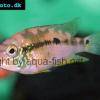 Pastel
Pastel  Midas
Midas  Red
Red  Bluemouth
Bluemouth  False
False 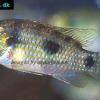 African
African  Agassiz's
Agassiz's  Banded
Banded 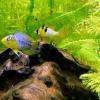 Yellow
Yellow  Cockatoo
Cockatoo  Blue
Blue  Blackstripe
Blackstripe  Highfin
Highfin  Redstripe
Redstripe  Threadfinned
Threadfinned  Macmaster’s
Macmaster’s 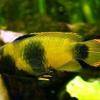 Panda
Panda  Norbert’s
Norbert’s 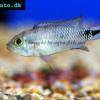 Blue
Blue  Thin-line
Thin-line  Three-striped
Three-striped  Viejita
Viejita 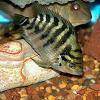 Flier
Flier  Archocentrus
Archocentrus  Convict
Convict  Seven
Seven  Spiny
Spiny  Oscar
Oscar  Sunshine
Sunshine  Chitande
Chitande  Firebird
Firebird  Midnight
Midnight  Lake
Lake  Sunshine
Sunshine  Aulonocara
Aulonocara  Nyasa
Nyasa 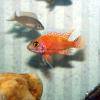 Ruby
Ruby  Grants
Grants  Aulonocranus
Aulonocranus  Chameleon
Chameleon  Benitochromis
Benitochromis  Orinoco
Orinoco  Yellow
Yellow 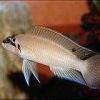 Brichard’s
Brichard’s  Guenther’s
Guenther’s  Southern
Southern  Cichla
Cichla 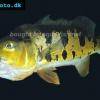 Peacock
Peacock  Bolivian
Bolivian  Red
Red  Many-pointed
Many-pointed  Jack
Jack  Red
Red  Three
Three 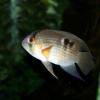 Keyhole
Keyhole  Azureus
Azureus  Red
Red  Jackson’s
Jackson’s  Crenicichla
Crenicichla  Honduran
Honduran  Blue-eye
Blue-eye  Afra
Afra 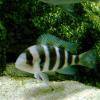 Frontosa
Frontosa  Slender
Slender  Malawi
Malawi  Chequerboard
Chequerboard  Checkerboard
Checkerboard  Malawi
Malawi  Ectodus
Ectodus  Tanganyika
Tanganyika  Canara
Canara  Green
Green  Rostratus
Rostratus  Pearl
Pearl 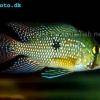 Geophagus
Geophagus  Yellowhump
Yellowhump  Suriname
Suriname  Redhump
Redhump  Red
Red  Dority’s
Dority’s  Argentine
Argentine 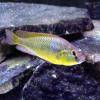 Burton’s
Burton’s  Victoria
Victoria 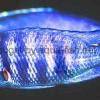 Haplochromis
Haplochromis  Jewel
Jewel  Banded
Banded 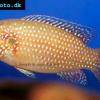 Lifalili
Lifalili  Lowland
Lowland  Texas
Texas  Pantano
Pantano  Severum
Severum  Banded
Banded 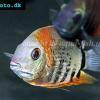 Severum
Severum  Rainbow
Rainbow  Parrot
Parrot  Chocolate
Chocolate  Brown
Brown  Marlieri
Marlieri  Golden
Golden  Striped
Striped  Masked
Masked 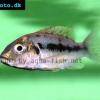 Konye
Konye  Blue
Blue  Trewavas
Trewavas  Electric
Electric  Dwarf
Dwarf  Redbreast
Redbreast  Lamprologus
Lamprologus  Gold
Gold 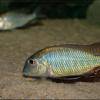 Greenface
Greenface 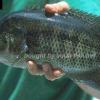 Mayan
Mayan  Aurora
Aurora  Blue
Blue  William’s
William’s 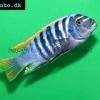 Zebra
Zebra  Malawi
Malawi  Blue
Blue 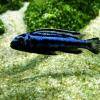 Blue
Blue  Mbuna
Mbuna  Parallel
Parallel  Purple
Purple  Flag
Flag  Bolivian
Bolivian  Ram
Ram  Basket
Basket 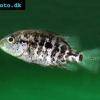 Haitian
Haitian  Zebra
Zebra  Striped
Striped  Neolamprologus
Neolamprologus  Brevis
Brevis  Fairy
Fairy 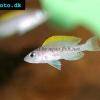 Neolamprologus
Neolamprologus  Cylindricus
Cylindricus  Hecq’s
Hecq’s  Neolamprologus
Neolamprologus  Lemon
Lemon  Mustax
Mustax  Daffodil
Daffodil  Six-bar
Six-bar  Five-bar
Five-bar  Marbled
Marbled 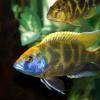 Giraffe
Giraffe  Blue
Blue  Sulphurhead
Sulphurhead  Wolf
Wolf  Jaguar
Jaguar  Blue
Blue  Marakeli
Marakeli  Madagascar
Madagascar  Pinstripe
Pinstripe  Pelmatochromis
Pelmatochromis  Kribensis
Kribensis 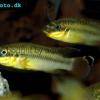 Striped
Striped  Red
Red  Deepwater
Deepwater  Fenestratus
Fenestratus  Nichols’
Nichols’  Southern
Southern  Bumble
Bumble  Demason’s
Demason’s  Slender
Slender  Red
Red  Mbuna
Mbuna  Malawi
Malawi  Kenyi
Kenyi  Powder
Powder  Altum
Altum  Angelfish
Angelfish  Angelfish
Angelfish 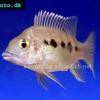 East
East  Juba
Juba  Earth
Earth 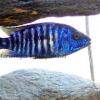 Electric
Electric  Azure
Azure  Lionhead
Lionhead  Discus
Discus  Blue
Blue  Red
Red  Zebra
Zebra  Brichard’s
Brichard’s  Blue
Blue  Firemouth
Firemouth  Zebra
Zebra  Yellow
Yellow  Blue
Blue  Dwarf
Dwarf  Blunthead
Blunthead 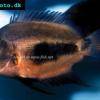 The
The  White
White  Twoband
Twoband  Fenestratus
Fenestratus  Window
Window  Tailbar
Tailbar  Black
Black  Redhead
Redhead 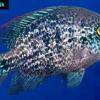 Oaxaca
Oaxaca  Xenotilapia
Xenotilapia